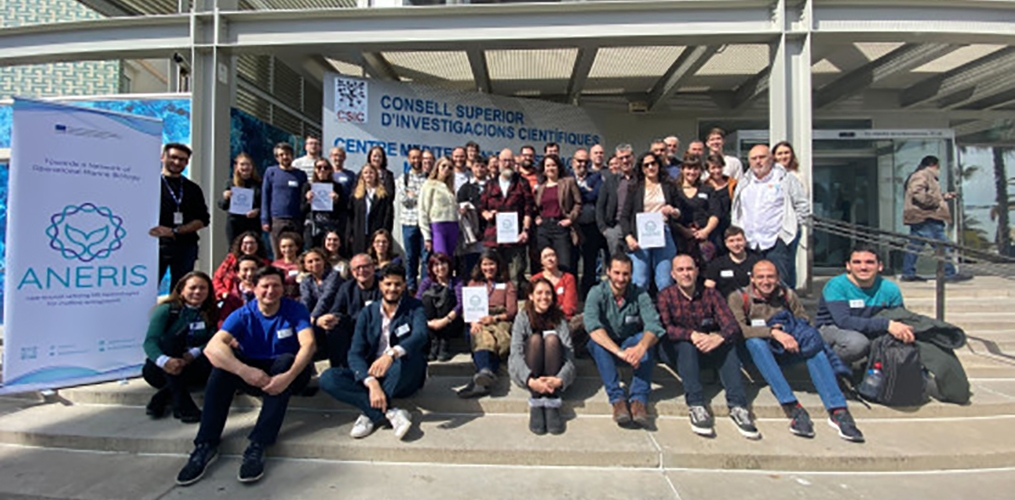
Marine and coastal biodiversity is under threat due to human activities, climate change and other factors. In order to protect and preserve these precious ecosystems, the new research project ANERIS has been launched under the Horizon Europe programme. Coordinated by the Institute of Marine Sciences ICM-CSIC, ANERIS is to protect these ecosystems through technological, scientific and methodological innovation in the fields of marine life-sensing and monitoring.
The aspiring work of ANERIS officially kicked-off with the project’s first consortium meeting, which took place on 8 and 9 March 2023 in Barcelona, Spain. Members of the 25 partnering organisations, including LifeWatch ERIC, gathered at ICM-CSIC to discuss the goals and objectives of the project, as well as the specific technologies and methods that will be used.
Gathered by a joint mission, the ANERIS partners will work together for the next four years to build the next generation of marine-sensing instruments and infrastructure for systematic routine measurements and monitoring of oceanic and coastal life, and their rapid interpretation and dissemination to all interested stakeholders. In total, ANERIS aims to pioneer 11 new technologies related to marine ecosystem monitoring, data processing and dissemination:
- NANOMICS – NAnopore sequeNcing for Operational Marine genomICS
- MARGENODAT – workflows for the MARine GENOmics DAta managemenT
- SLIM-2.0 – A Virtual Environment for genomic data analysis (ANERIS extended version)
- EMUAS – Expandable Multi-imaging Underwater Acquisition System
- AIES-ZOO – Automatic Information Extraction System for ZOOplankton images
- AIES-PHY – Automatic Information Extraction System for PHYtoplankton images
- ATIRES – Automatic underwaTer Image REstoration System
- AIES-MAC – Automatic Information Extraction System for MACroorganisms
- AMAMER – Advanced Multiplatform App for Marine lifE Reporting
- AMOVALIH – Advanced Marine Observations VALidation-Identification system based on Hybrid intelligence
- AWIMAR – Adaptive Web Interfaces for MARine life reporting, sharing and consulting
These technologies will be validated across four ANERIS case studies:
- High-temporal resolution marine life monitoring in research infrastructure observatories;
- Improved spatial and temporal resolution of marine life monitoring based on genomics;
- Large scale marine participatory actions;
- Merging imaging and genomic information in different monitoring scenarios.
During the second day of the ANERIS project kick-off meeting, which was kindly hosted by the members of the Catalan Federation of Underwater Activities (FECDAS), the partners began the co-design and co-creation processes of the technologies within each case study by brainstorming the specific knowledge gaps, their potential solutions, and how to achieve them within the project.
After two days of exciting discussions and some serious planning, the consortium feels confident that the project is starting off on the right foot. The ANERIS consortium members are committed to working together to achieve the project’s goals and to help preserve marine and coastal biodiversity for future generations. With this, we are eagerly looking forward to all the impactful achievements ANERIS is going to develop in the upcoming four years.
Stay tuned on the ANERIS project channels for regular news and updates: